Lessons learned in the search for the perfect backpacking camera
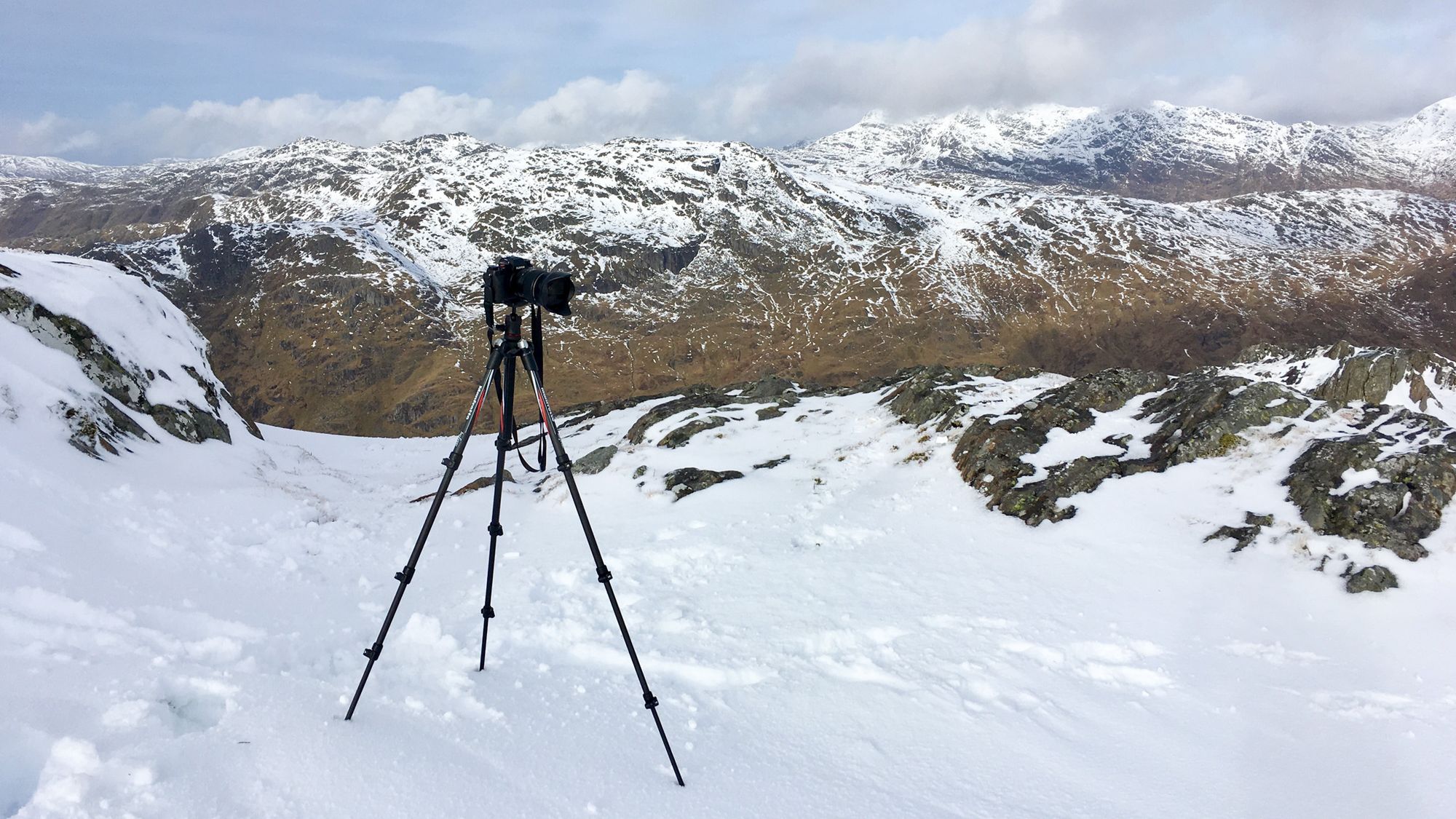
It’s fair to say that, over the last few years, I’ve tried out a few different camera systems. Here’s what I’ve learned.
A quick note: this is about my own personal needs, and a few lessons learned in finding them out. Your own requirements may differ. You shouldn’t necessarily take this as advice on what you should do, although I think most of the lessons I’ve listed towards the end of the article can apply to anyone.
What I’m using in 2019, and why
Since 2015, I have used several different Fuji APS-C cameras and Canon 1″-sensor compacts. While I loved how small and light the Canons were, ultimately the image quality – while adequate for my needs – wasn’t sufficiently better than a phone camera to justify carrying one. For me, APS-C is the sweet spot, but I have had a number of problems with my Fujis.
The final straw came on the Cape Wrath Trail in February 2019 when my Fujifilm X-T2 developed several faults. The eyecup broke, the autofocus selector switch failed, and movie recording stopped working. The setup (with 16–55 f/2.8 zoom lens and full-height tripod) was also far too bulky and heavy, and the image quality from the expensive 16–55 was distinctly underwhelming anyway. After a couple of weeks I was seriously regretting my decision to take so much camera gear with me on the trail. I could have achieved the same images with half the weight.
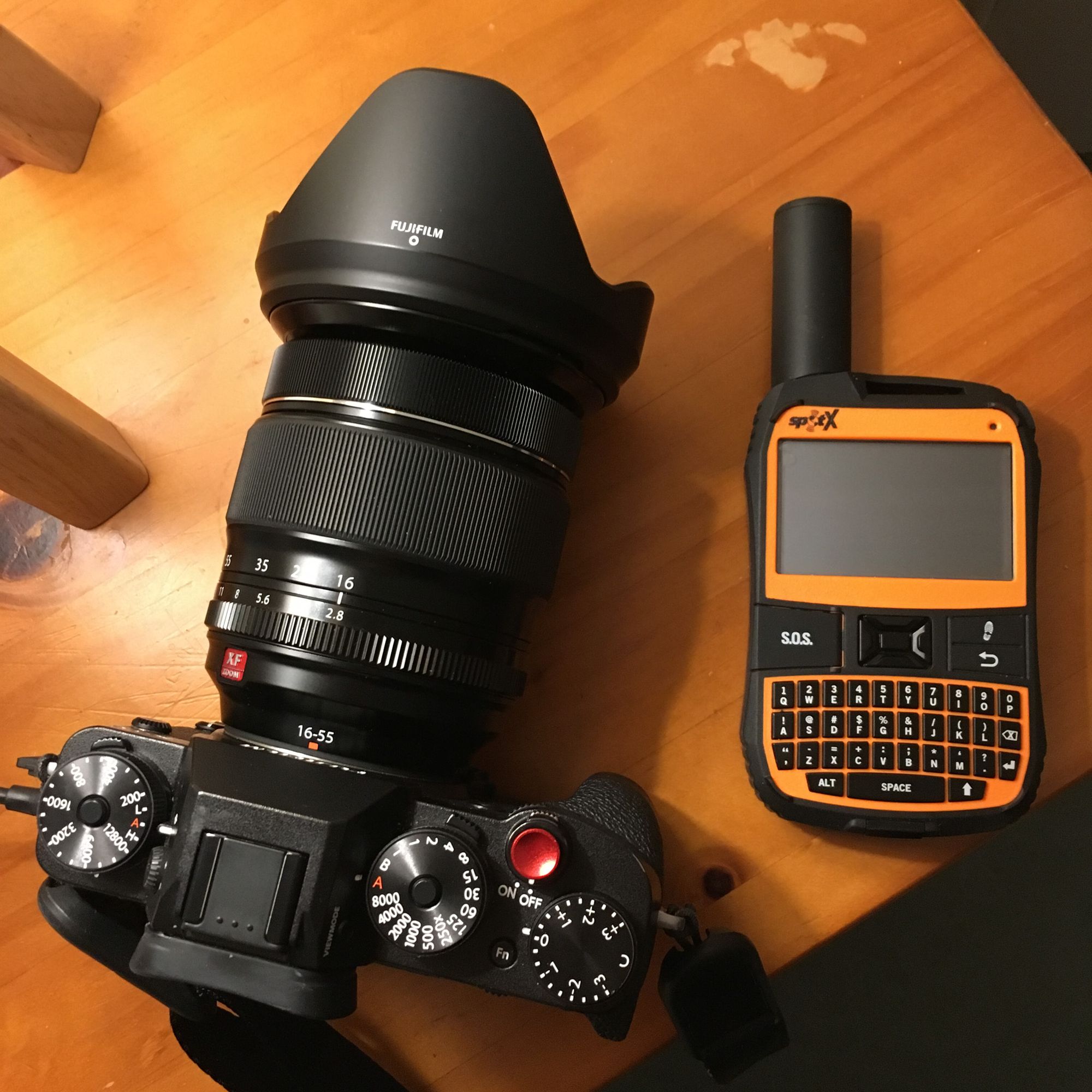
So, after four years, I am done with Fuji. I’m fed up with constant reliability problems, and the gear is heavy for APS-C.
After talking about camera systems with my brother James and with Chris Townsend, I ultimately decided to copy Chris’s strategy and adopt the Sony APS-C system. I plan to use a Sony a6300 with the 16–50 f/3.5–5.6 pancake zoom lens for all my backpacking trips for the foreseeable future.
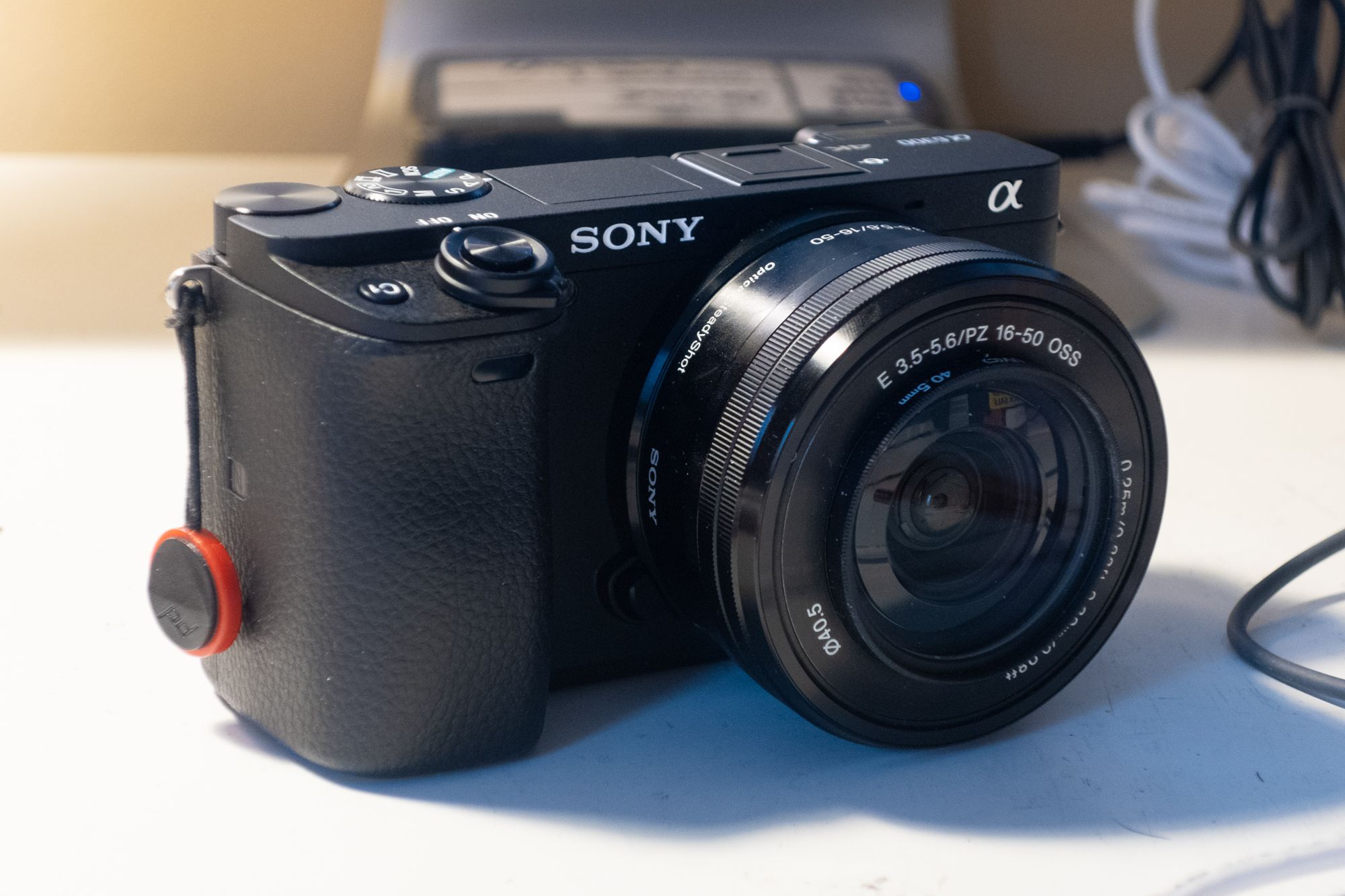
Why I chose this setup
The Sony a6300 and 16–50 zoom lens tick all my boxes for a backpacking camera:
A useful zoom range.
While I love shooting with prime lenses, ultimately a zoom is more flexible, and provides you with more image opportunities. This is more important than my aesthetic preference for primes.
Small and light.
The total system weighs 527g – less than half the weight of my previous Fuji setup. It also fits in a significantly smaller camera bag (my old Mirrorless Mover 5), which has multiple advantages on the trail: it’s easier to carry, easier to keep waterproof because you can bung the whole lot in your pack if it rains, and the bag itself is lighter.
Lighter tripod possible.
Due to the low size and weight, you can get away with a much lighter tripod. On the CWT in Feb 2019 I carried a tripod weighing 1.1kg because nothing lighter would support the camera adequately.
A lighter camera can be used with a lighter tripod, and for the Sony kit I’ll be going back to my pocket-sized Ultrapod camera support for most of my long-distance trails. This camera support is very small, so to get any height you have to prop it on a boulder or strap it to the branch of a tree, but with some patience it’s perfectly adequate. I’ve used the Ultrapod on many of my long-distance walks over the last few years. While I occasionally whinge about the inconvenience of not being able to set up a full-height shot wherever I want, I just can’t face the weight of a full tripod any more!
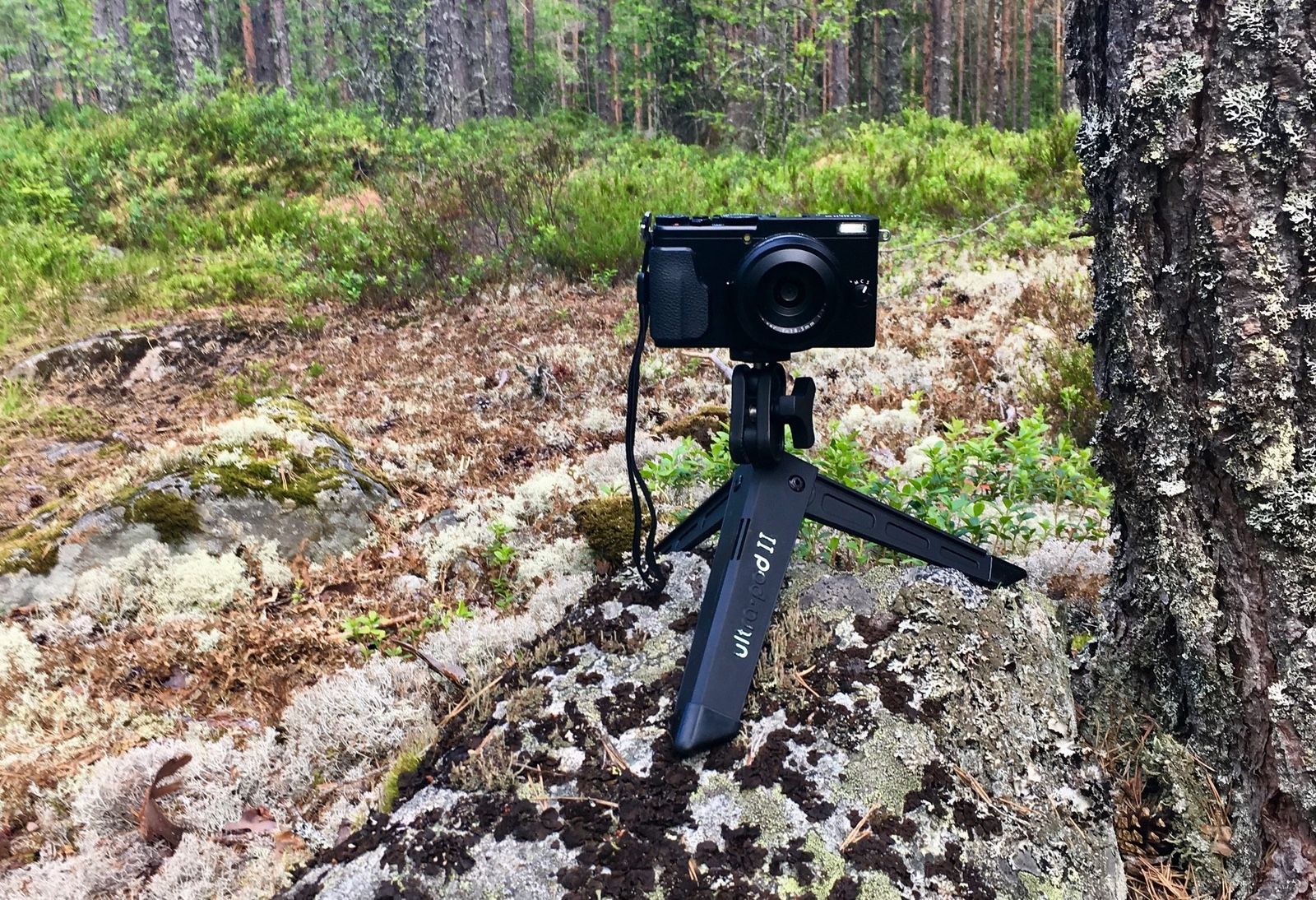
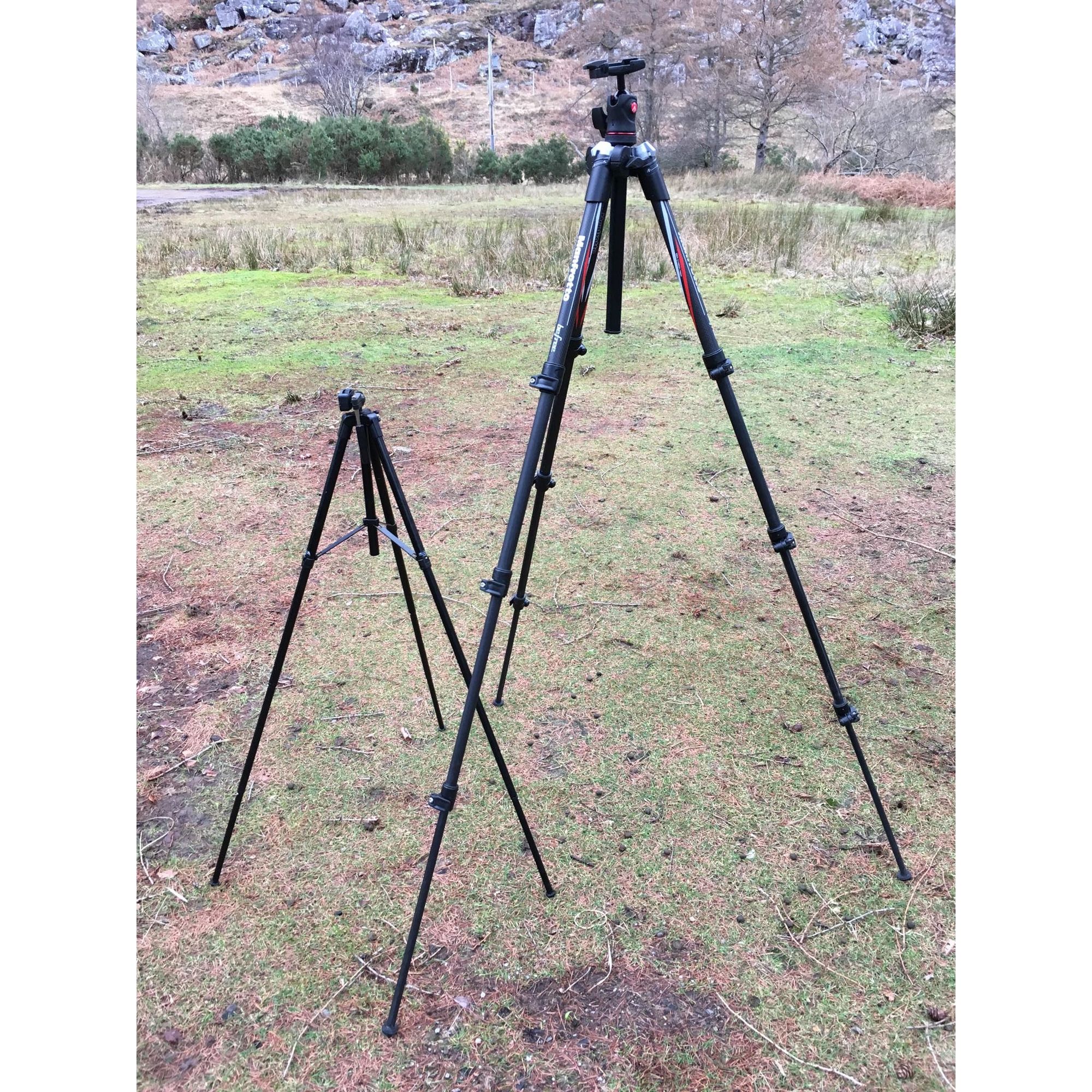
Image quality is as good as or better than the Fuji.
In my testing, the much-maligned Sony 16–50 kit zoom has image quality at least as good as the Fujinon 16–55 f/2.8 that cost an order of magnitude more and is the size and weight of a brick. I’m not sure if I have an exceptional copy of the Sony 16–50, or if my copy of the Fuji 16–55 was lousy, but the images speak for themselves.
I’ll also add that Chris Townsend told me he was very happy with his 16–50 lens, and consistently found that it produced excellent results – despite what you’ll read about the lens in reviews online. For me, that endorsement carried more weight than a hundred poor reviews, because I know that Chris has used his setup professionally for years.
Setting the lens aside for a moment, the camera itself yields image quality very similar to that of the X-T2, which is to say more than good enough for detailed double-page spreads in magazines.
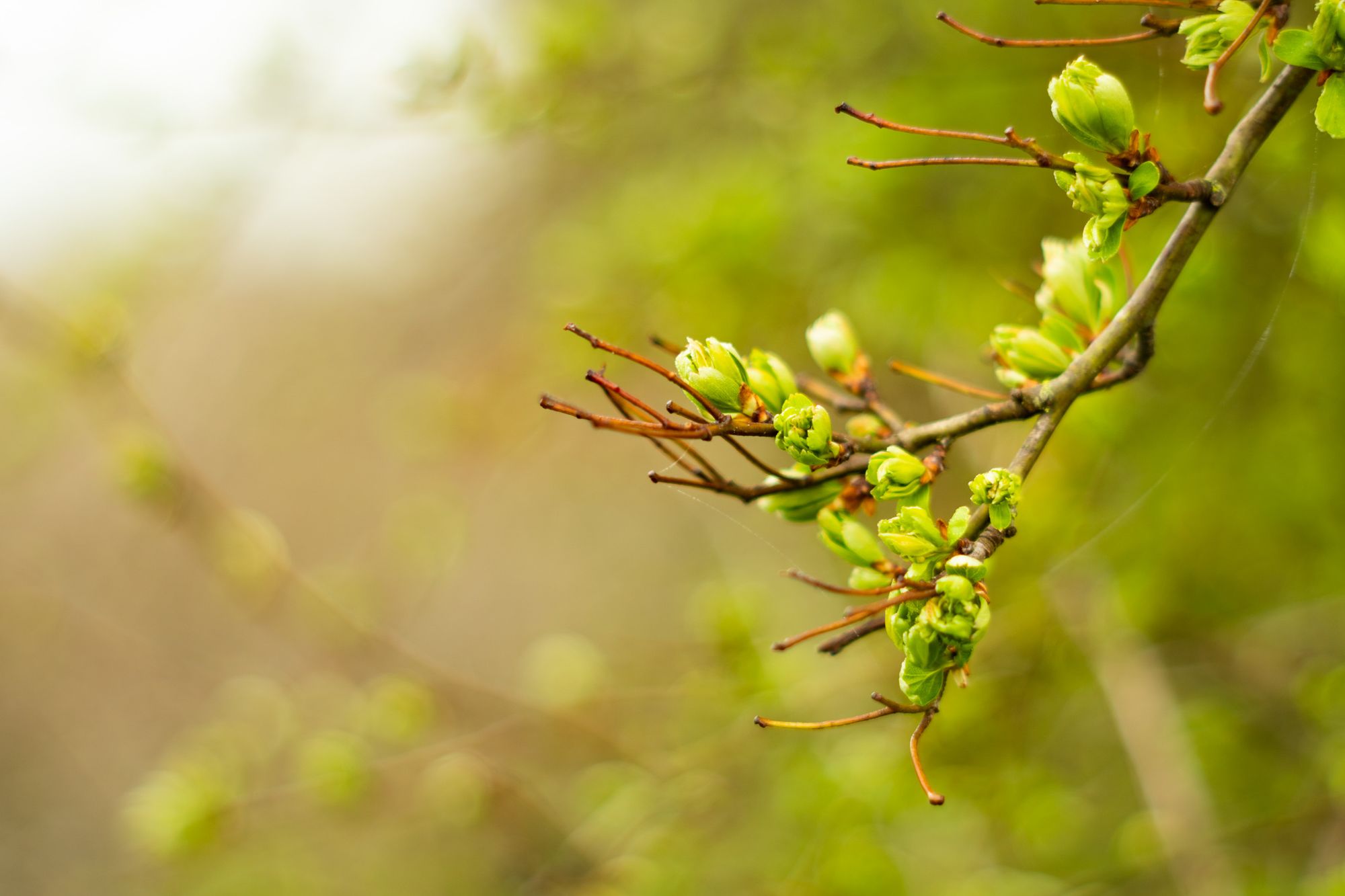
Reasonably weatherproof.
The Sony a6300 is described as ‘weather-resistant’, although it clearly isn’t as well-sealed as the Fujifilm X-T2 (which had rubber gaskets all over the place). The lens isn’t weatherproof in any way, but due to the small size of the total package it’s much easier to keep it out of the rain. I’m confident this setup will be weatherproof enough for my needs.
Usable for night-sky photography.
The 16–50 lens has a comparatively slow maximum aperture of f/3.5, but this is wide enough to capture starscapes if you crank up the ISO. At some point I will be investing in the Sony-compatible version of the excellent Samyang 12mm f/2, which I had long used for astrophotography on my Fuji system.
A good electronic viewfinder.
While I’ve been happy using cameras without a viewfinder, an EVF makes composing much easier, especially in bright sunlight.
A tilting screen.
I find this essential when using a very low tripod such as the Ultrapod.
Lessons learned
- There is no such thing as the ‘perfect camera’. I asked that question in 2017 when I used the Fujifilm X70 for a few months. It was good, sure, but there are compromises no matter what you choose.
- There is a lot of rubbish advice on the internet. If I believed what I’d read in reviews, I’d never have even considered the Sony 16–50 lens, which is almost universally panned.
- Weight is near the top of my list of priorities – but other priorities are compromised once you go beyond a certain point. Finding that sweet spot can take trial and error, which is ok. We all need to experiment until we find the right solution for our needs.
- My true needs are quite simple and basic. I really don’t need a constant f/2.8 zoom lens or a bag full of fast primes. I certainly don’t need a full-frame sensor.
- I can get by with a single wide-angle prime, but if carrying a single lens I now prefer a zoom.
- Reliability and simplicity matter to me.
- The superior tactile handling experience of Fuji cameras is far less important to me than I’d thought it was.
- All cameras are excellent nowadays, and the differences between them come down to details.
- When asking for advice, everyone will tell you to buy something different, because everyone has different priorities of their own.
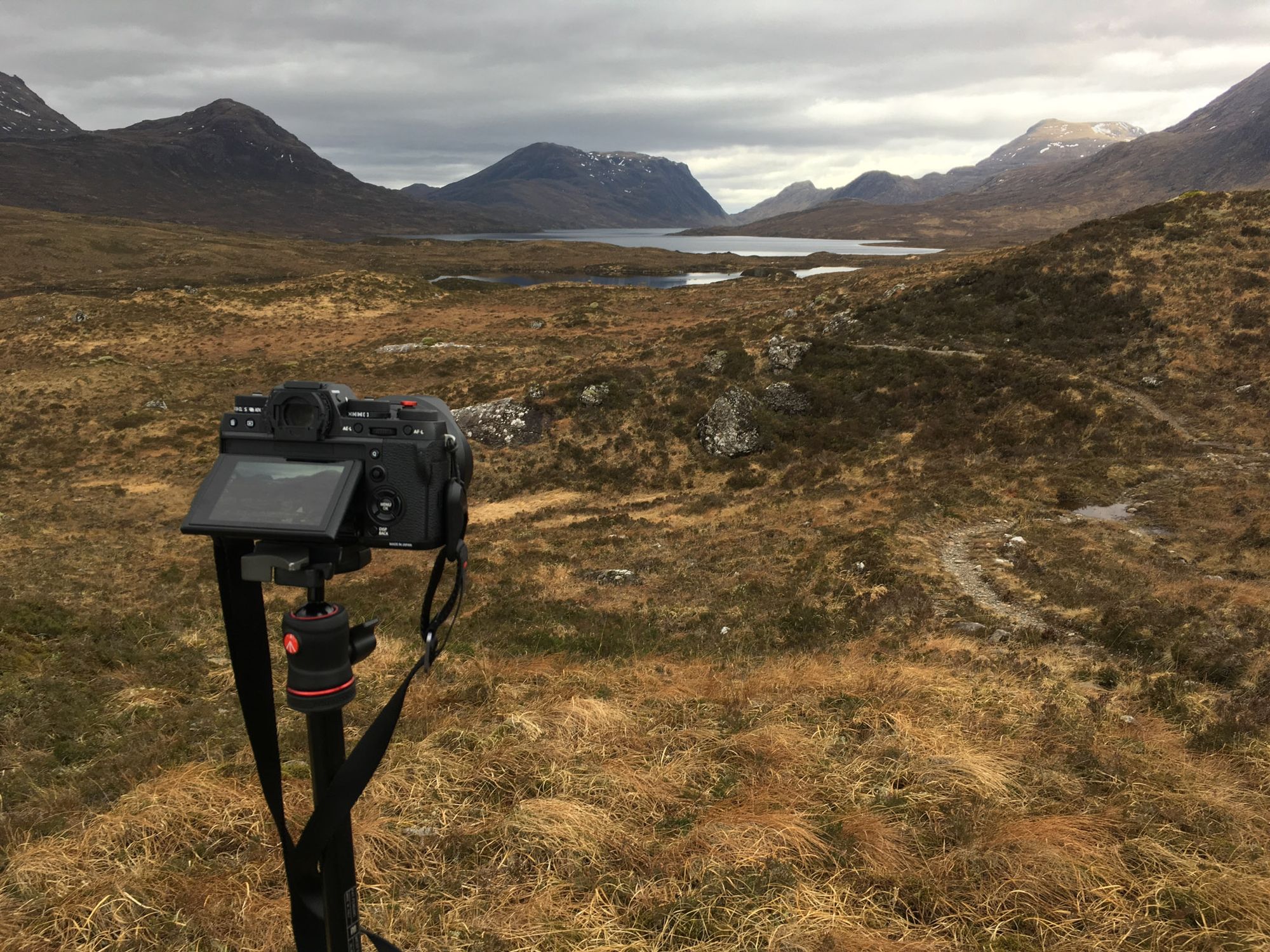
What about phone cameras?
I recently published a guide to smartphone photography for outdoor writers. Since then I have upgraded my phone from the iPhone SE to the iPhone Xr, and I’ve been pleasantly surprised by the leap in image quality. When shooting in raw, the Xr yields image quality almost as good as the Canon 1″-sensor compacts I was using last year.
However, my original piece still stands. While I could get by with just the Xr and still come back with publishable images if I needed to, a dedicated camera system with a larger sensor will capture more detailed images at a higher resolution with less noise. The handling of a real camera is better in bad weather or while wearing gloves, and a lens with optical zoom provides greater flexibility. Other features such as a tilt screen and replaceable batteries/memory cards are icing on the cake.

I’m very pleased with the upgrade, though. The iPhone Xr will make a far more competent secondary camera than the SE was.
We have long been past the point where phone cameras are good enough for most people for personal use, of course. If my images weren’t destined for publication there wouldn’t be a debate here!
Next steps
I’ve been shooting casually with the Sony setup for a couple of weeks on my local walks, so the true test will come on my next long-distance trail. It’s my hope that, having tried a variety of alternatives, this will be the system that fits my true needs best – one I’ll stick with for more than a year or so! Time will tell.
Alex Roddie Newsletter
Subscribe here to receive my occasional personal newsletter in your inbox. (For the fun stuff, please consider subscribing to Alpenglow Journal instead!)



